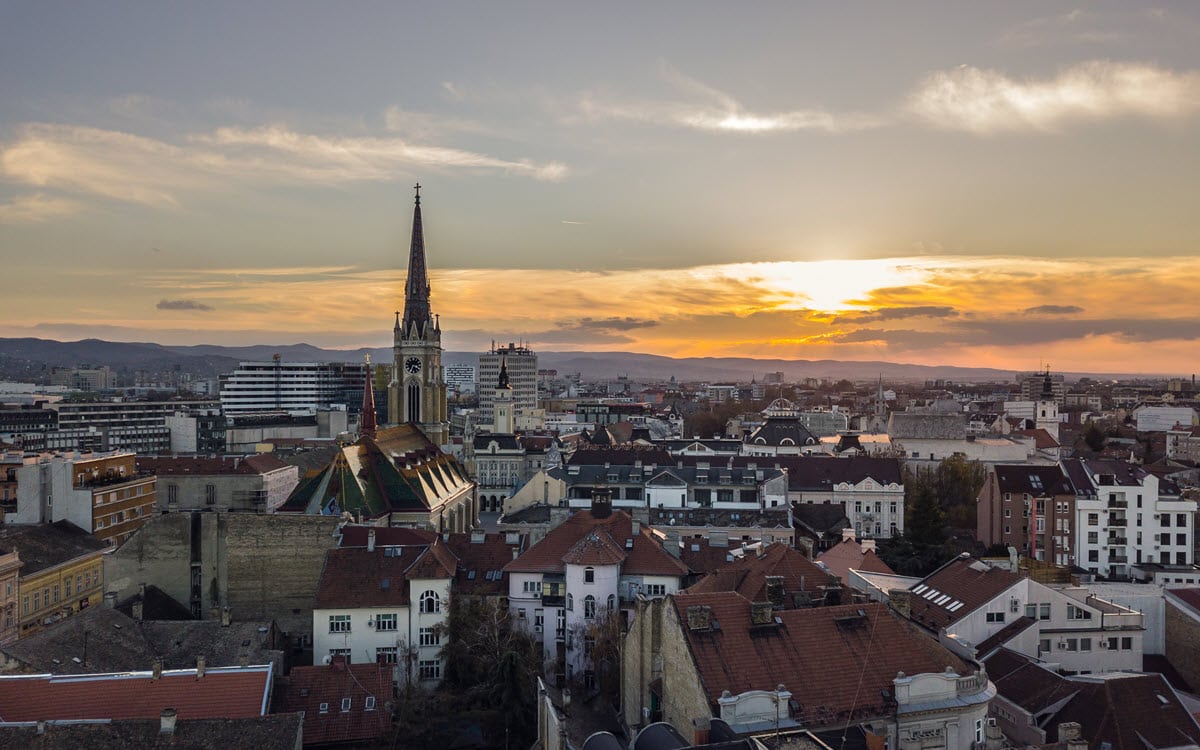Serbia is a landlocked country in the Balkan region of Eastern Europe. For most of the 20th century, it was a part of Yugoslavia. Excluding Kosovo, it covers an area of 77,474 km² 29912,879 mi2. That’s slightly smaller than the US state of South Carolina. The country has a population of 7.2 million of which 1.6 million live in the country’s capital.
Serbia is known for its lively capital, Belgrade. It has also earned its nickname as being one of the top nightlife spots in Europe with the capital’s lively splavs on the water and the renowned Exit Festival. Serbia also packs a punch with lush nature and the magnificent Uvac Canyon.
Belgrade
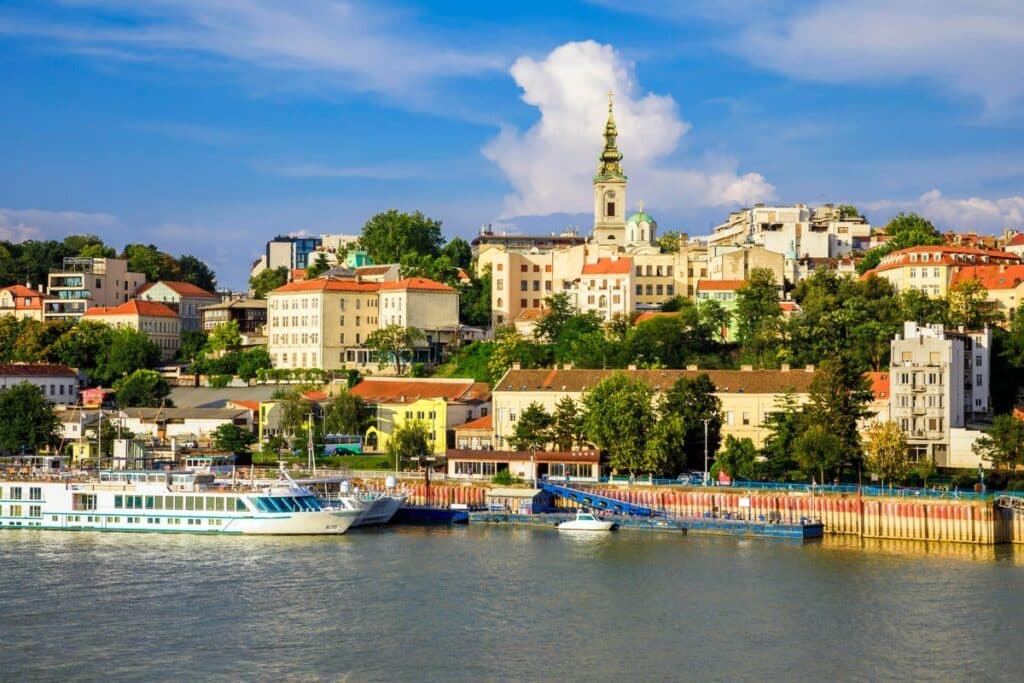
Belgrade is the capital and the largest city in Serbia. It’s also known as the white city. This name was given due to the city’s fortress that looked white from the vantage point of the river.
The city is known as one of the top destinations for nightlife in Europe, especially in summer when the nightclubs on the water are open. The city is a perfect example of the country’s tumultuous past. You’ll find socialist buildings next to art nouveau masterpieces and some remnants of its Habsburg and Ottoman past.
The Belgrade Fortress
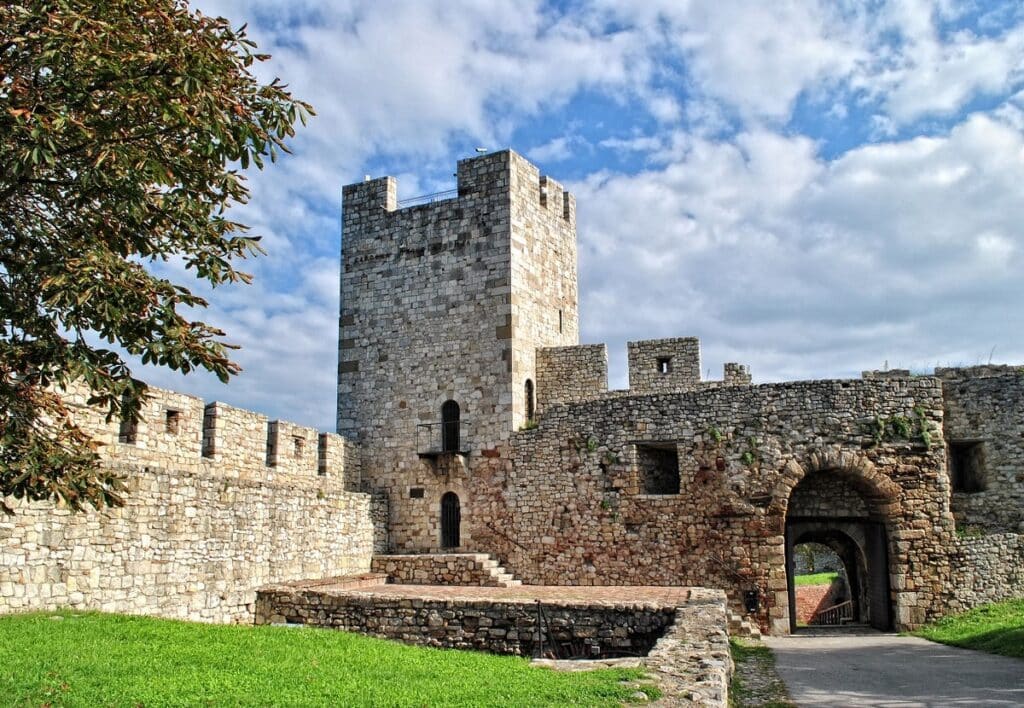
The fortress in the capital is the most visited attraction in Serbia. This 50-hectare (124-acre) site served as a military outpost since the first century AD. It’s set in a beautiful park and contains many interesting museums and monuments. In 1979 the site was officially declared a Monument of Culture of Exceptional Importance.
The views from the fortress are incredible as it stand on a 125-meter (410ft) cliff overlooking the confluence of the Sava and Danube River. Admission is free, so there’s no reason to miss out on Belgrade’s most iconic attraction.
Skadarlija
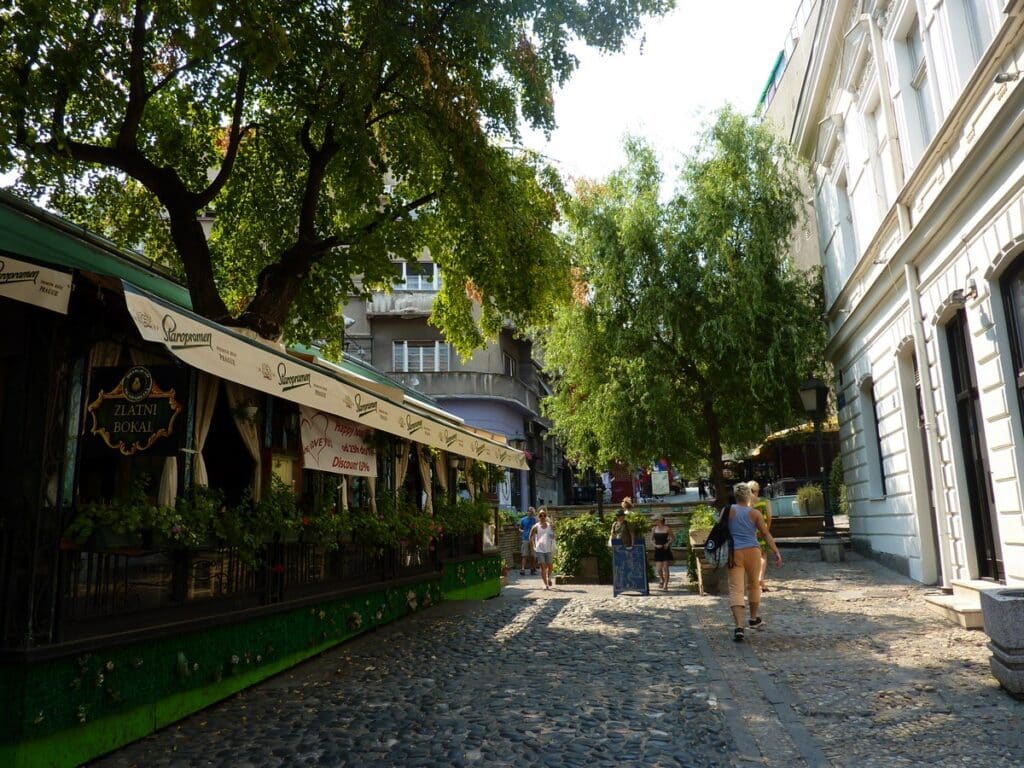
Skadarlija is a beautiful vintage street set in Belgrade in the municipality of Stari Grad (Old Town). It’s known as the city’s bohemian quarter with the beautiful preserved traditional urban architecture. Many describe this street as being similar to Montmartre in Paris. The street is even protected by law as a spatial cultural-historical unit.
It’s the city’s second most popular attraction. Wander around the street to purchase something from one of the unique shops or grab a bite at one of the many inviting restaurants.
Local Bistro Kafana
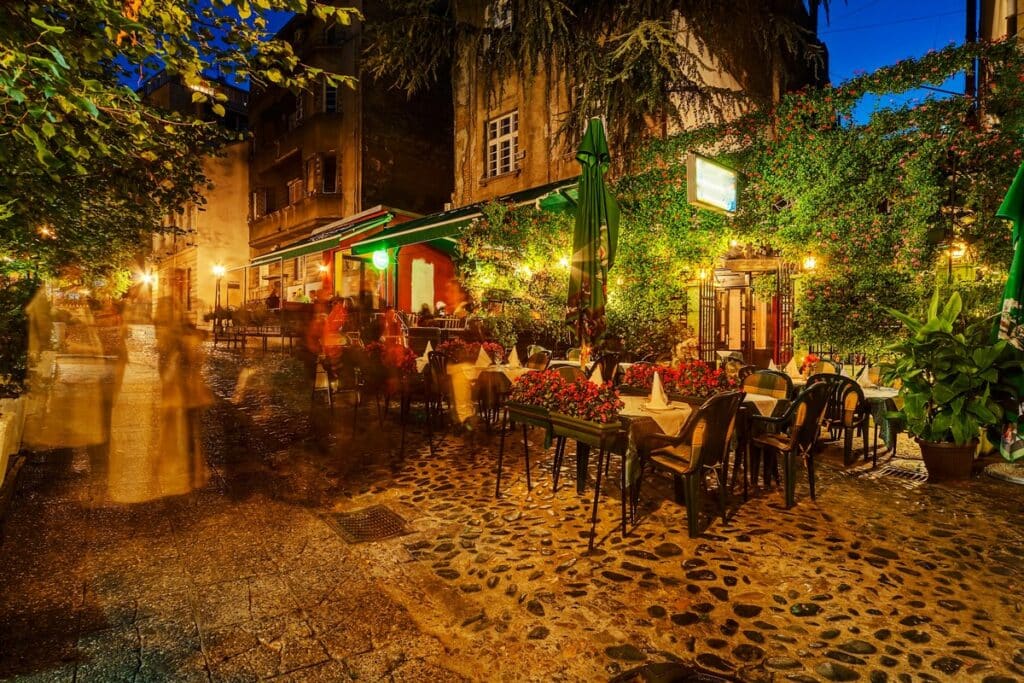
Kafanas started as coffee shops, but today they have become central to Serbia’s social life. It’s a type of tavern, closer to a pub than it is to a restaurant. Locals don’t go there alone to grab a bite or a drink. Instead, it’s meant as a meeting place where friends and family gather, listen to an orchestra, and buy drinks for each other.
Visit one of these local Kafanas if you want to meet locals, and don’t be shy to buy a round of drinks for your new friends.
Splavs
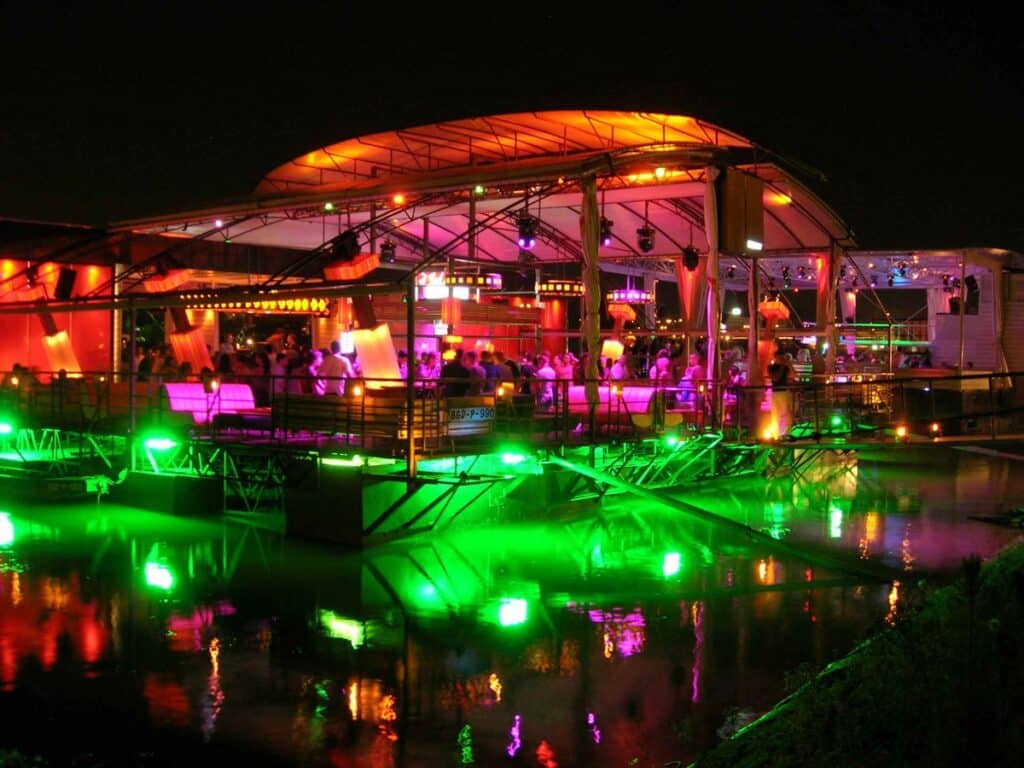
Splavs (the direct translation would be something like a barge or raft) are floating river clubs, and they have become a symbol of the country’s capital. The splavs are one of the reasons Belgrade is known as one of the top nightlife destinations on the continent.
The Splavs start opening in spring as it starts to get warmer and people start heading outside to party. If you want to visit one, beware that some may require reservations, and you need to dress to impress.
The Special Holiday Slava
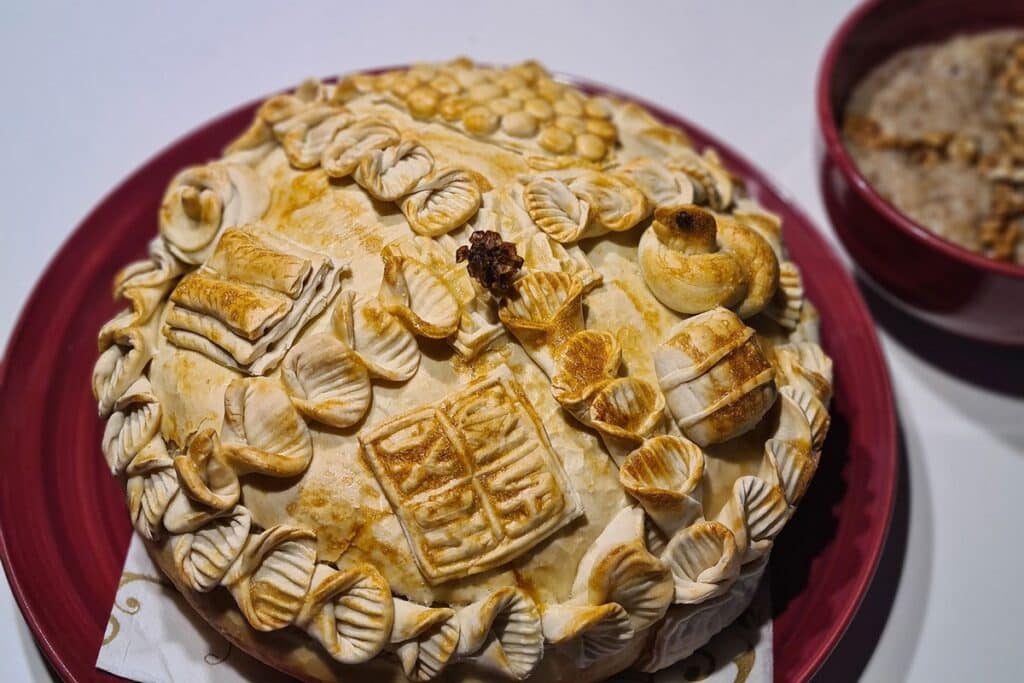
Slava is one of the most important holidays in Serbia. During this holiday, Orthodox Christian families honor their patron saint.
Slava traditions may look a bit different depending on the family, but a few elements are always the same. For example, they will always serve boiled wheat and slava cake and light a candle that burns the whole day.
Custom dictates that everyone is invited to join in the feast, so if you are lucky enough to be invited by a local, don’t miss out on the opportunity to take part in the festivities.
Their National Drink Šljivovica (Plum Brandy)
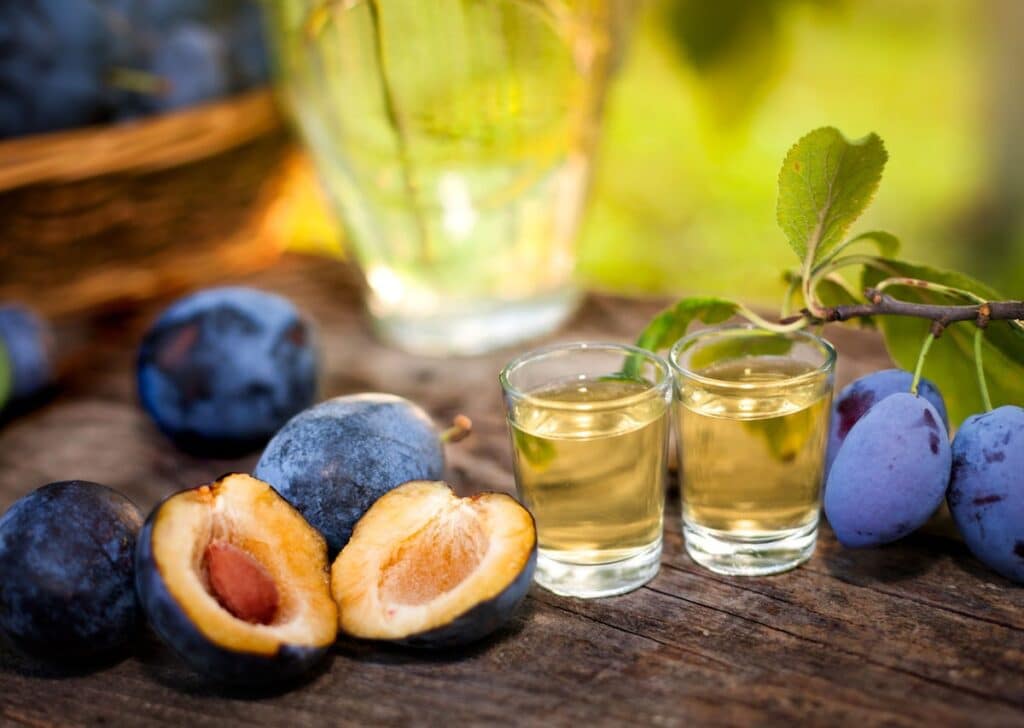
Also known as Rajika, this plum brandy is a central part of Serbian culture. However, it’s notorious for being high in alcohol, and although served in shot glasses, it’s not to be drank as such.
Rakija can be made from any fruit such as peach or fig, but in Serbia, plum is the most popular. The alcohol content can be anything between 40-65%, so be careful if you drink with locals that you don’t underestimate its potency.
Đavolja Varoš
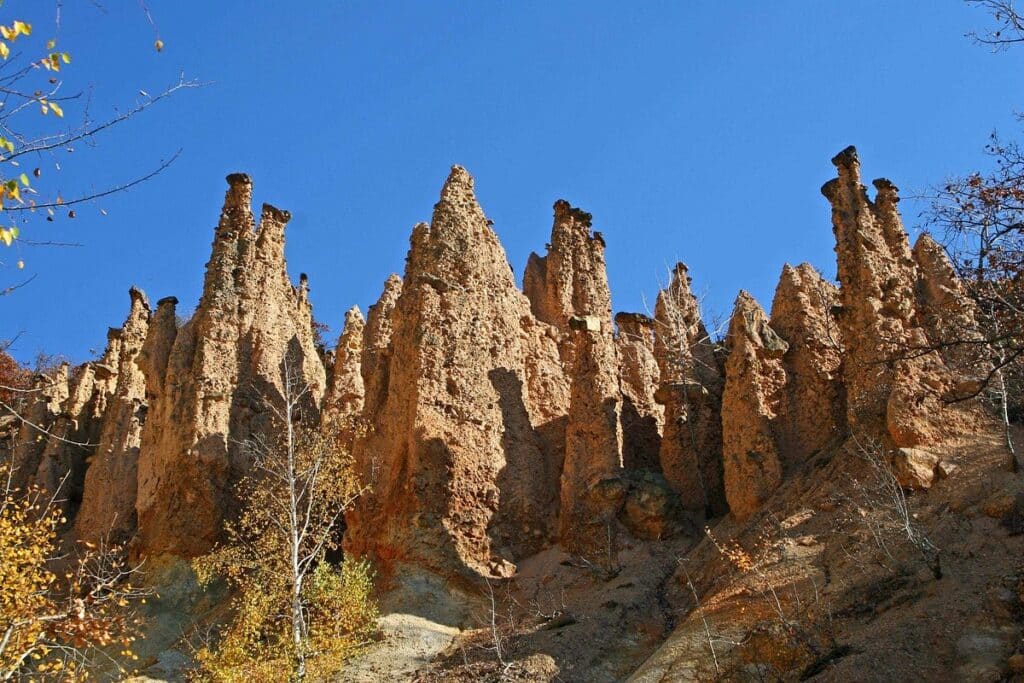
Also known as the Devil’s Town, Đavolja Varoš, is a collection of over 200 strange rock formations. The geomorphological conditions that need to be present to create these formations are extremely rare making this site one of only a few in the world.
These peculiar formations have led to all kinds of legends and folk myths about how they came into being. These range from the rocks being devils turned to stone to God petrifying guests at an incestuous wedding.
Niš
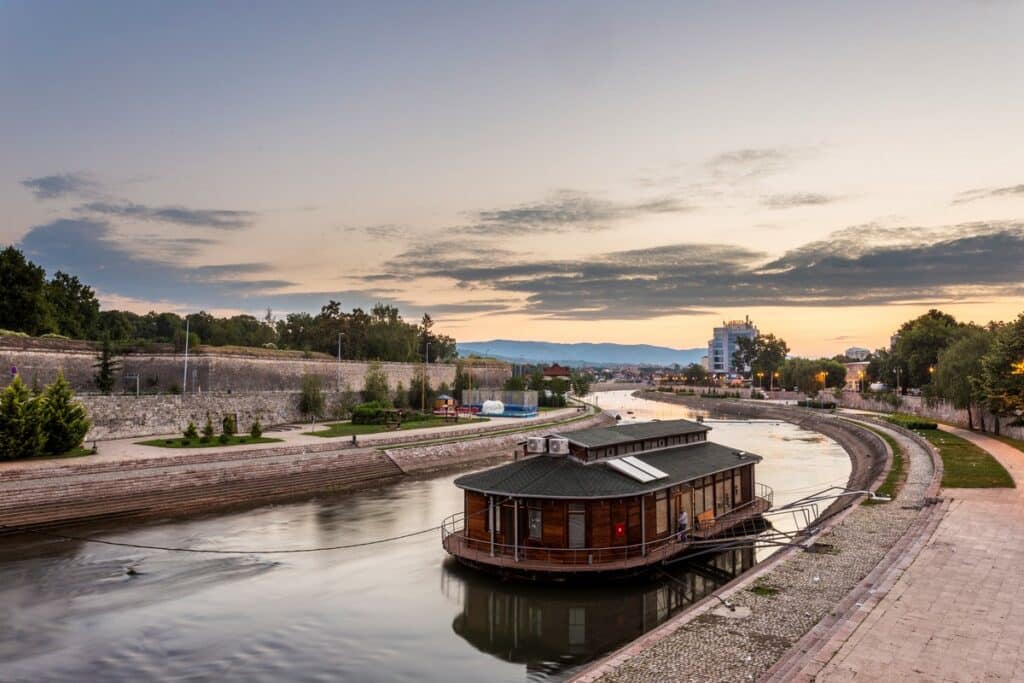
The city of Niš offers the perfect blend of history and nature and is the place to visit if you are looking for a destination somewhat off-the-beaten path. All over the city you find monuments and buildings linked to the country’s often tumultuous past.
Check out the Banovina place in the city centre. Built in 1886 it used to be the seat of government, but today it houses the university. This is the place where Serbian officials received the telegram from Austria-Hungary declaring war on the country following the assassination of Archduke Franz Ferdinand that sparked the First World War.
Skull Tower
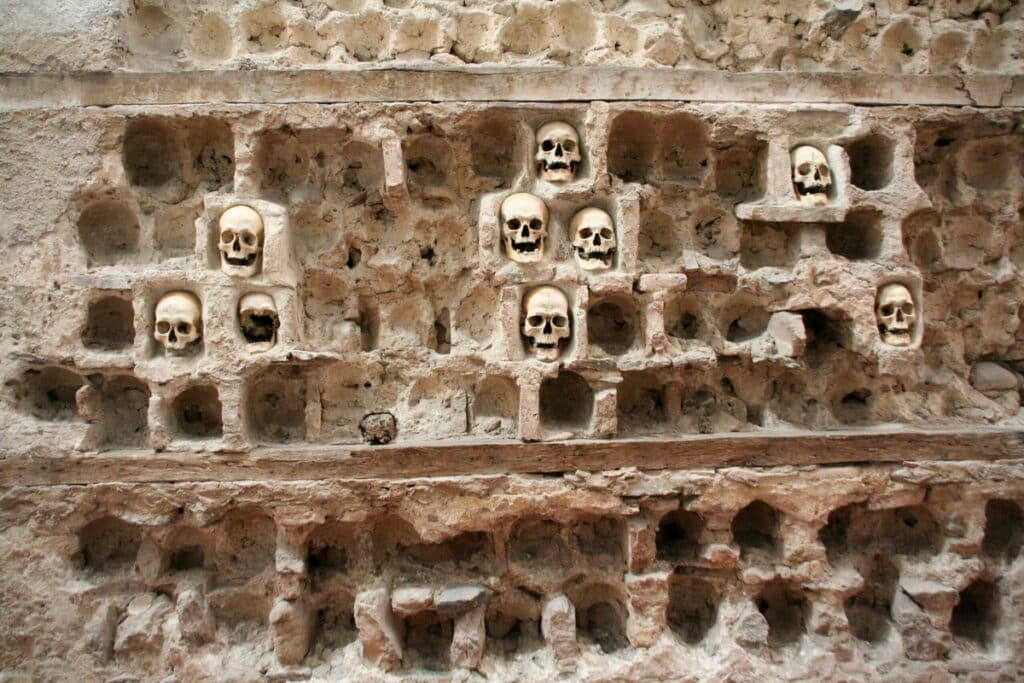
The Skull Tower is a monument in Niš made out of human skulls. Ottoman Empire General, Hurshi Pasha, ordered the construction of the monument in 1809. The skulls of Serb rebels were used following the Serbian uprising that the Ottomans crushed.
The monument originally consisted of 952 skulls, but today less than 60 remain. Some of the skulls have fallen out, were stolen by thieves, or taken by relatives for a proper burial. Today the monument is still a powerful reminder of the centuries of brutal Ottoman rule.
Zlatibor
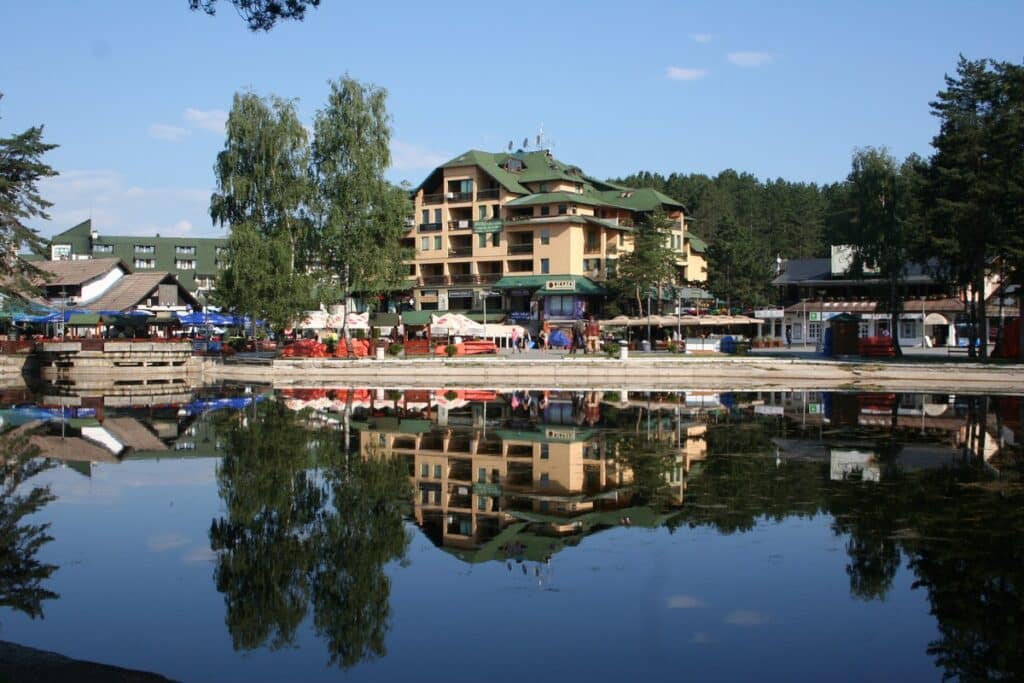
Zlatibor is a mountain resort set in a beautiful mountainous region that’s become a hotspot for rural and sports tourism. The region is located in the western part of the country, with the Tara National Park to its north and the Zlatar mountain in the south.
The region is full of forests and meadows, making for excellent hiking trails and cycling routes in the summer. However, even in winter, it’s a popular attraction thanks to its well-maintained ski slopes.
Thanks to the crisp clean air and therapeutic climate, the mountain has also become a hotspot for health tourism.
The Ultimate Serbian Souvenir: A Pirot Kilim rug
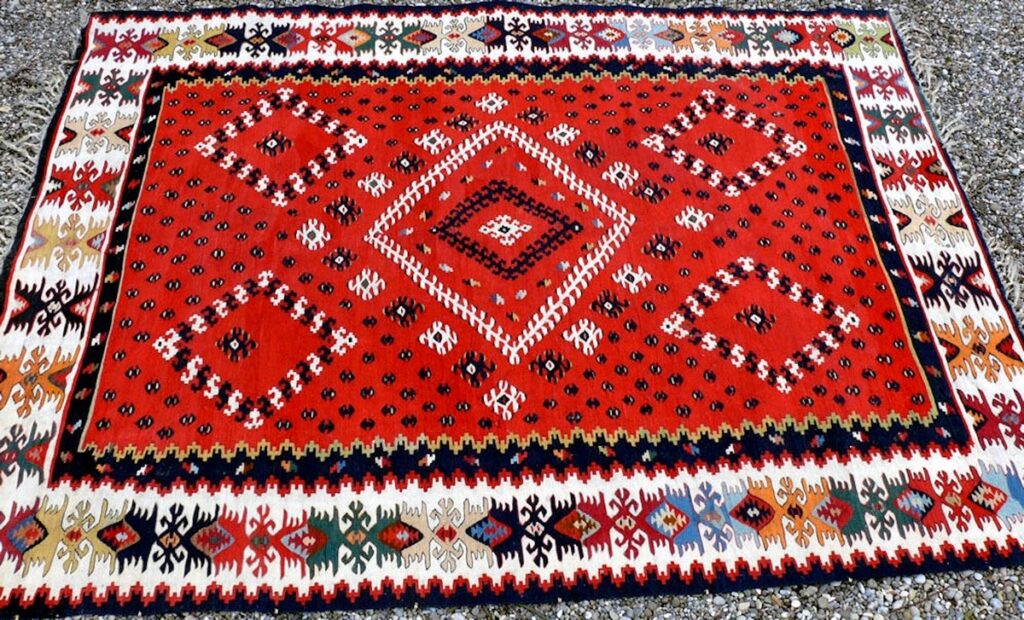
Pirot Kilim rugs are a special variety of flat tapestry-woven rugs produced in Pirot, a town in southeastern Serbia. Many people might assume these rugs are Turkish rugs due to the Ottoman Empire’s occupation in the past. However, they are distinctly Serbian and the first mention of these rugs date back to 1565.
Pirot used to one of the most important rug-making centres in the entire Balkan region. The town itself also used to be located on the historical highway that linked central Europe and Constantinople (Istanbul). The making of a rug takes immense skills and many artists start their training when they are only 10 years old.
Exit Festival
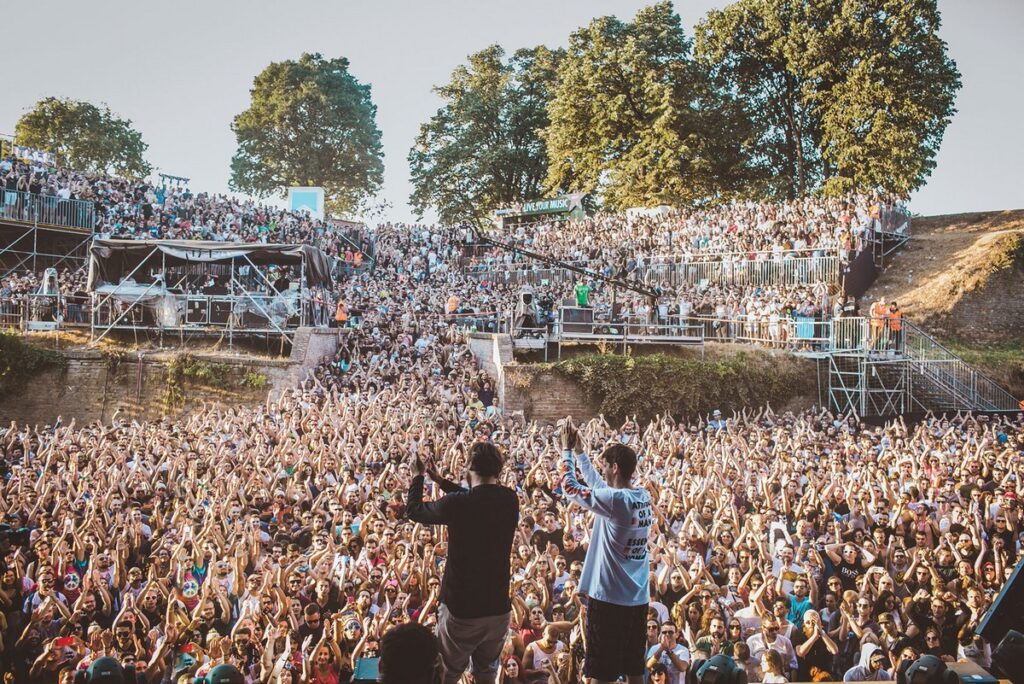
The Exit Festival is a summer festival that has been ongoing since 2000. It was started by students advocating for peace and freedom in the country. It was first held in the University Park, but now it’s held at the Petrovaradin Fortress in Novi Sad.
It’s one of the most popular festivals on the continent. In 2013 and 2017, it won the Best Major Festival award at the European Festivals Awards. It also won the Best European Festival award at the UK Festival Awards in 2007.
Today the festival still prides itself on supporting humanitarian and environmental causes.
Uvac Canyon
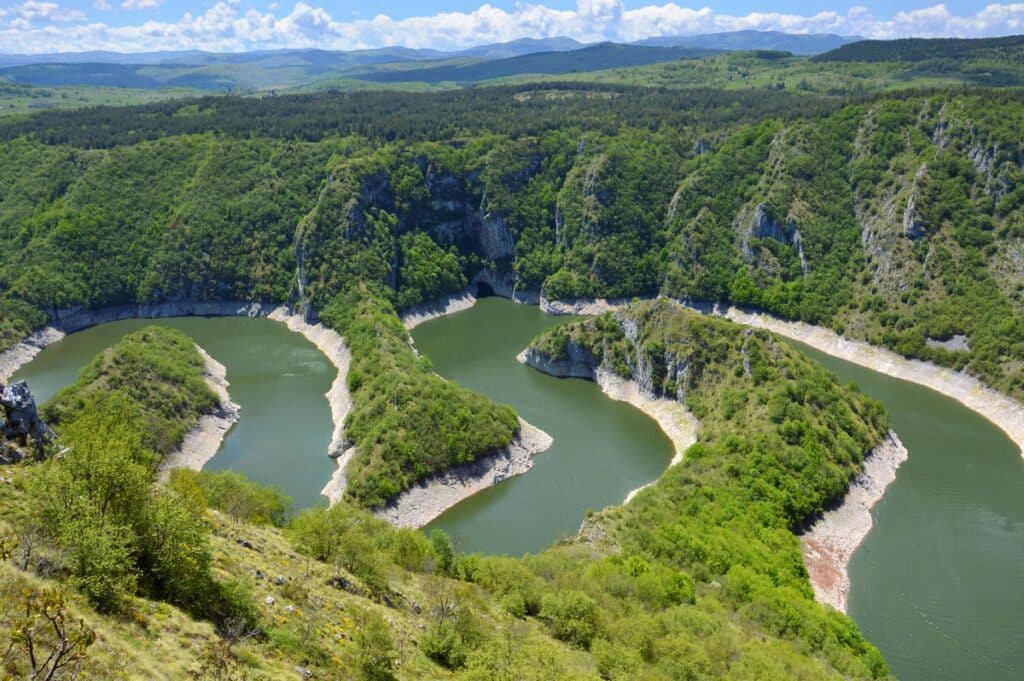
The Uvac canyon and river is a spectacular piece of nature that you wouldn’t expect in Europe. The green Uvac River is best admired from the Molitva or Veliki Vrh lookout points. It’s set in a nature reserve popular amongst hikers and bird watchers. The reserve has 219 species of plants, 130 bird species and 24 types of fish.
A highlight in the reserve is the 2km (1.2 miles) long Ice Cave with several galleries that you can visit. Don’t forget a jacket as it has a permanent temperature of 8°C (46,4°F).
Sremski Karlovci
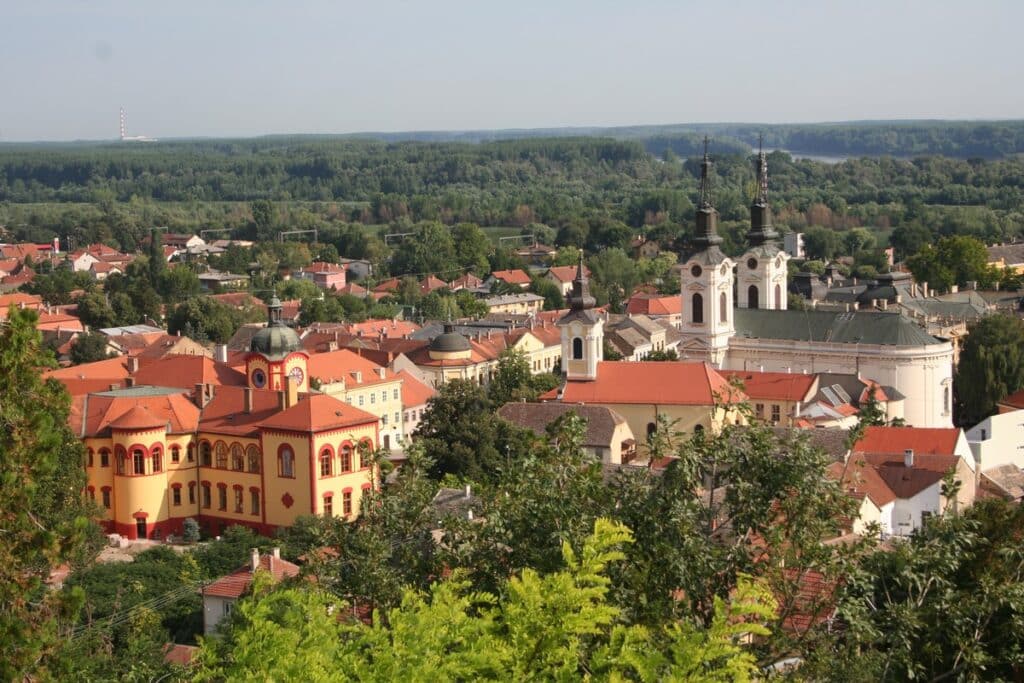
The quaint little town of Sremski Karlovci is also called the Baroque City Museum thanks to its Baroque style of construction. Others call it Serbia’s prettiest town. Many different nations ruled this little town throughout its history and all left a little bit of its culture.
Today Sremski Karlovci is a mecca for history and culture lovers. The town is small enough so you can explore it on foot in one day. However, it’s a vineyard town so plan enough time so you can savour the region’s wines.
Church of St. Sava
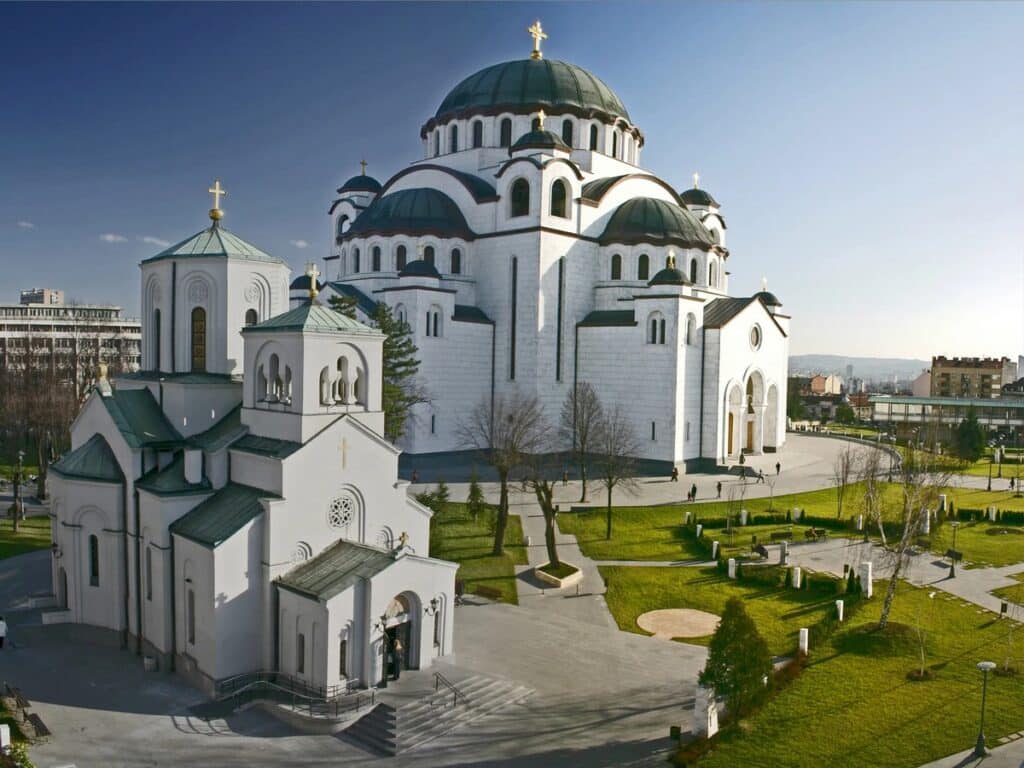
When entering Belgrade, the imposing edifice of the St. Sava church is visible from every corner. The Church of St. Sava is the largest Serbian Orthodox church and largest Orthodox place of worship in the balkan region. It’s also the second biggest in the world!
The church is said to be built on the spot where the Ottoman Grand Vizier Sinan Pasha burned the remains of Saint Sava in 1595 in an attempt to break the Serbian spirit.
Studenica Monastery
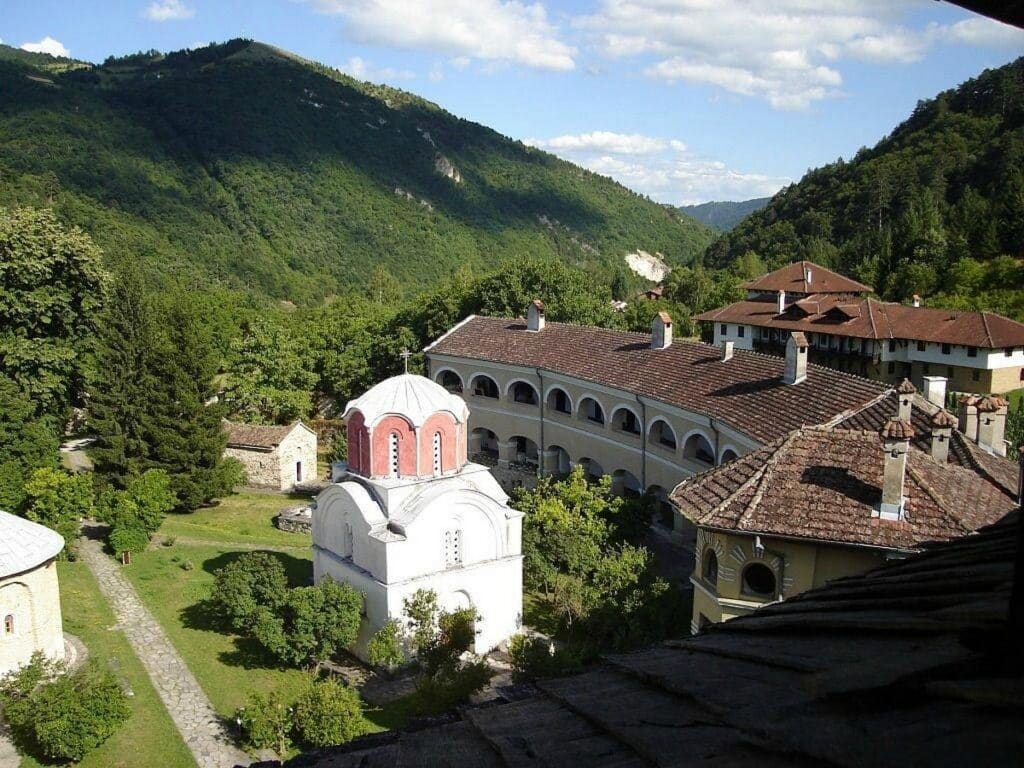
The Studenica Monastery is a 12th-century Serbian Orthodox monastery in central Serbia. It’s one of the largest and richest Serb Orthodox monasteries. It was found by the founder of the medieval Serb state, grand prince Stevan Nemanja.
A priceless collection of Byzantine paintings from the 13th and 14th centuries adorns its two most prominent monuments: the Church of the Virgin and the Church of the King.
Josip Broz Tito’s Grave
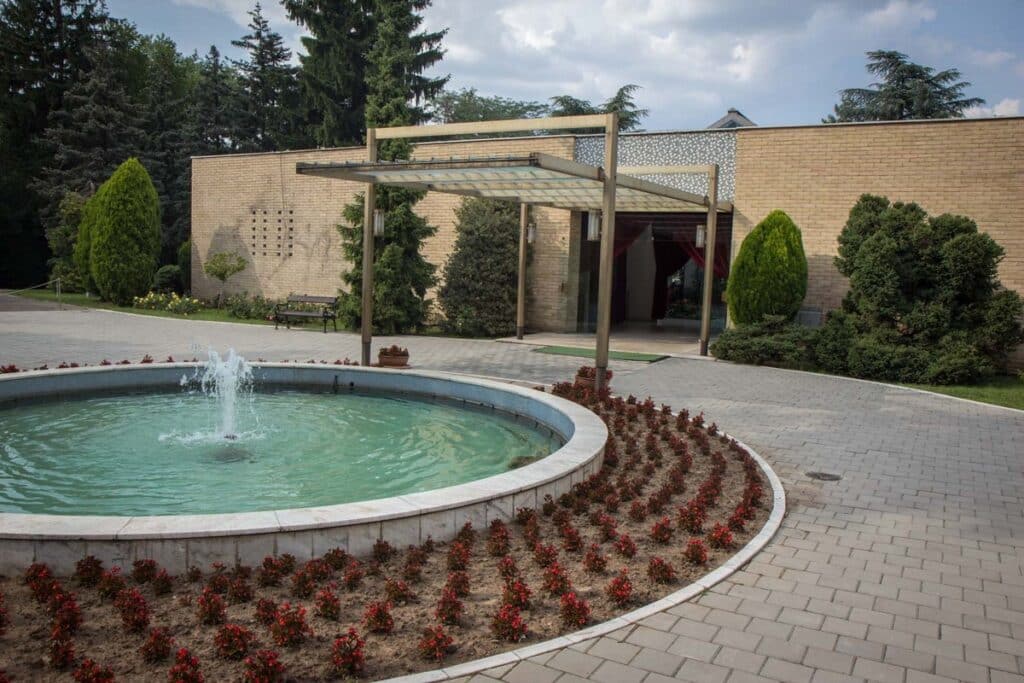
You can’t understand Serbia without taking note of Josip Broz Tito. The man who ruled Yugoslavia for the majority of its existence. The communist leader was wildly popular, and you can visit his grave located in an enclosed flower garden known as the House of Flowers.
The grave is located within a larger compound known as the Museum of Yugoslavia History. In one of the exhibitions, you can see many of the presents given to Tito during his leadership.
Žiča
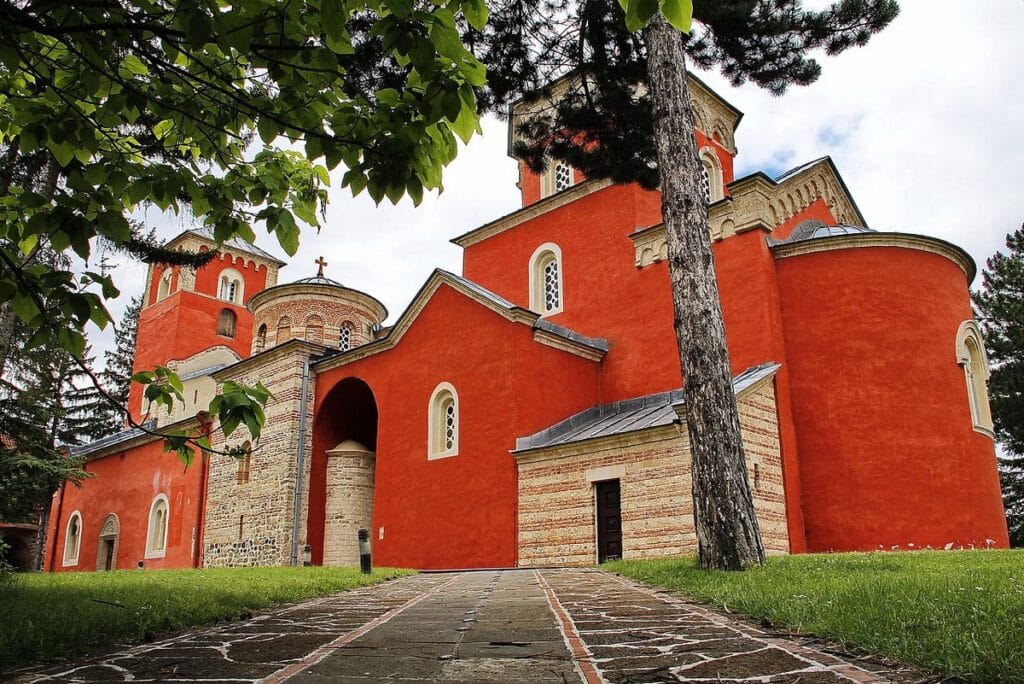
The 13th century Žiča monastery played a central role in the country’s early days. Serbia’s most important saint, St. Sava, founded the monastery and represented the seat of the Serbian Orthodox Church for the first 34 years.
The monastery is incredibly beautiful and looks more like a caste with its large walls and churches within. This monastery was so important that no Serbian King was considered official until they were crowned here.
Serbian brandy, Vinjak
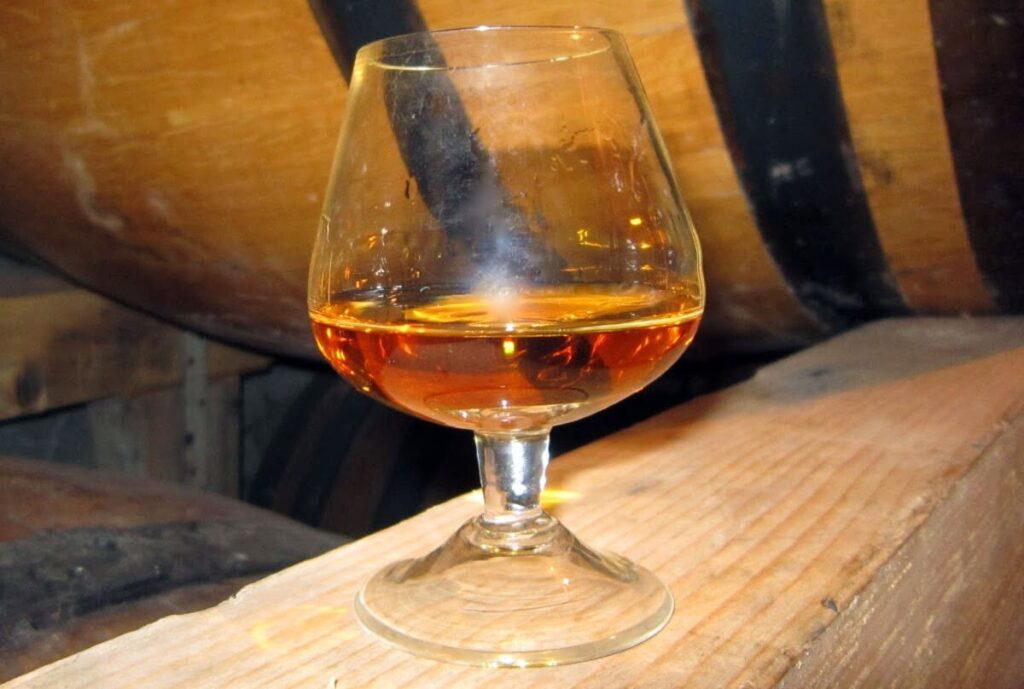
Don’t expect to only try Rajika when you are visiting Serbia as this is not the only typical drink. Vinjak was originally branded as Cognac, but had to be rebranded when stricter laws governing what Cognac constitutes came into place.
The drink itself is light brown and contains 40% alcohol. It’s hard to define the taste as anything typical like brandy or rum so it’s typically classified in a category of its own. People from ex-Yugoslavia will be quick to tell you that Vinjak is more than just a drink. It’s a drink rooted in tradition with a long history in this part of Europe.
